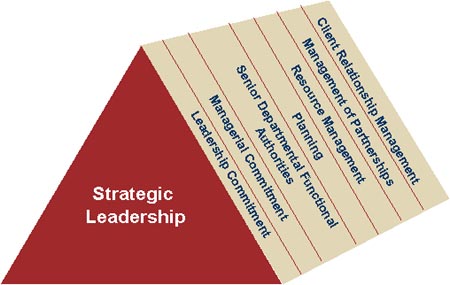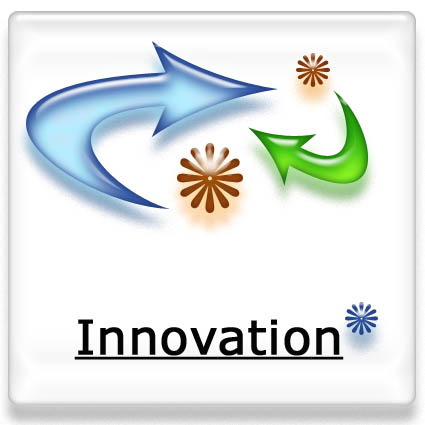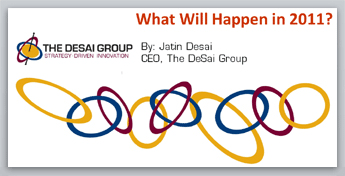Browse by Tag
- "Real" Innovation (2)
- Alignment (6)
- Business Innovation (9)
- Business Plan (2)
- Business Plans (1)
- Creativity (24)
- Critical Success Factors (4)
- Entrepreneurship (9)
- Global Competiveness (4)
- Human Side (11)
- India (1)
- Innovation (4)
- Innovation Consulting (18)
- Innovation Killers (3)
- Innovation Management (18)
- Innovation Tools (17)
- Innovation Training (24)
- Innovations (7)
- Inventions (16)
- IT Innovation (1)
- Leaders (5)
- Leadership (20)
- Leadership Development (13)
- Organizational Leadership (2)
- Organizational Strategy (20)
- Personal Values (6)
- Prediction (5)
- Strategic Innovation (38)
- strategic planning process (4)
- Strategy (3)
- Training (1)
- Vision (5)
- Weekly Dose (8)
Posts by Month
- 2014
- 2013
- 2012
- 2011
- 2010
- 2009
- 2008
- 2006
15 Killer Questions to help build a New Marketing Strategy
So you think you need a new marketing strategy? Or do you want to make sure your current marketing strategy is solid. Review and answer the following killer questions to help you develop maximum clarity quickly.
- Is there a written strategic plan and/or marketing plan with measurable goals? If not, what is the goal of a new marketing strategy? To achieve what?
- What is driving the new “go to market strategy” and what are the expectations from the corporate view?
- Are the products the same or repositioned?

- Has a USP (Unique Selling Proposition) been formulated and tested?
- Is there a plan for implementing and supporting the sales & marketing through third parties; including: training, allocation of transactions, measurement systems, staffing, etc.?
- If repositioned, have focus groups been used for strategy evaluation? With ultimate customers?
- What is the risk of product cannibalization? For your company and other similar products?
- If products not significantly changed, why the marketing change?
- How does the competition go to market with these or similar products?
- What are the advantages vs. disadvantages of options such as direct selling…different costs, service quality, close rates, margins, training?
- How would these products fit into the company strategy? How would these products, being sold through currently, add value in the eyes of the company customers?
- What marketing vehicles have been explored to assure success…direct mail, solicitation, co-marketed with other products, etc.?
- Are there plans to test market this strategy using a controlled study with market segment variables, such as income, geodemographics, age, penetration by competition, pricing, etc.?
- To what extent has market sizing studies been performed and corresponding budgets developed?
- How have you integrated Social Networking into the strategy?
Implementation
Option-1: Answer above questions yourself. Distribute the list with answers to your colleagues in your area and outsides your area and in other business units. Ask them to make your answers better (improve) or add new questions and the answers you had not thought of.
Option-2 (4 hours): Run an ideation session. Depending on number of participants, set up working group (round) tables by assigning equal number of participants per table. Assign a question to each table and have them generate ideas using various idea generation Innovation Tools. Give 30 minute per question. Once completed, have each table pick Top 3 ideas and post them on a Top Ideas list at the front of the room. Repeat for each remaining question.
Beyond Gravity #2
Here is another installment of what has been traveling through my desk. In the last Beyond Gravity #1 we looked at innovation examples related to design, a book, a Harvard Conference I went to, and much more. I hope you enjoy some of the mind-benders listed below. Feel free to send me your comments and enjoy!
- Technology: 3D Models created by Cell Phones (Microsoft): Click here

- Does God Exist?: Earth is smaller than an atom…the Human mind is insignificant…or is it? NASA’s March 7th photo of the Sun is amazing. You may want to put it as a favorite site! Click here

- Big Thinking: If you understand Darwin’s Forgotten Theories you can discover solutions to just about every challenge in your personal and professional life… Click here

- How to Fail Fast: Want to solve impossible problems faster? Learn to re-think your original problem itself.
 In most cases, the problem that seems impossible is not the problem you need to solve. Click here
In most cases, the problem that seems impossible is not the problem you need to solve. Click here - Green Innovation: PepsiCo unveils 100% Plant based bottle: Click here
- Product: Home in a Car by Swiss Room Box… Click here
- Steelcase's Brilliant Workstation For Staging Virtual Meetings [Video] Click here
Role of IT in the Company's Innovation Process - Part- II
Role of IT in the Company’s Innovation Process
Q&A with Jatin DeSai, CEO The DeSai Group (March 21, 2011)
6) Much of the advice on innovation talks about how important it is that the CEO champions innovation efforts, that without his/her sanctioning and rewarding, it's pretty impossible to create innovation in a company. First off, what are your thoughts on this?
- It depends on the size of the organization and definition of innovation (video). If we are talking about innovation culture, I agree. If we are talking about innovative products only, it does not have to be owned by the CEO but the CTO or R&D or the BU heads with full support of the CEO.
- In the beginning of the innovation journey, recognition is more important then rewards. We have developed a 9-window framework to help organizations think through the delicate issues related to R&R. No doubt R&R should be there, but it has to be designed with high precision.

7) Going further, I think that even in less than ideal situations, you will still see resourceful people creating innovation in their own little area. Any thoughts on that? And perhaps if you're an IT leader stuck in that kind of situation, what you can do to lead innovation in a "hostile" environment?
- I don’t think everyone within IT can be natural intrapreneur. However, there are many such people within each IT departments waiting to be discovered. They need an ‘innovation process’ that allows them to easily experiment their ideas quickly without the gravitational burden of the organization upon their shoulders.
- Some of these intrapreneurs have already demonstrated they can help drive innovation. Identify them, set up a simple innovation process, define an innovation goal for this year, provide a common language and a framework for innovation, and then design a structure that allows ideas to flow from bottom to the top without with least resistance.
- Your best innovators don’t need monetary rewards. In fact, in our experience, instead they want independence and freedom to test their ideas fast. They generally are working on much larger outcomes then their own personal gains. Real intrapreneurs are more motivated to ‘make a difference’ then to gain personal recognitions.
- Once you find these people, the environment (hostile or not) does not matter to them. Start your innovation journey with these people first.
8) Any issues/points/challenges that I didn't cover that are important to this conversation?
- I believe that IT departments can be the best program managers for innovation. They can gain faster insights about the future trends in technologies. IT departments in partnership with Marketing, can create powerful platform to gain deeper understanding of current and future needs of the customers. By combining these core skills of the two departments, strategic options can be developed to help improve clarity about the future and reduce broad spectrum of uncertainty for the management team. Developing early clarity, about any opportunity, should be a mandate for IT departments and Marketing department together. This is one critical issue, if addressed, can become a competitive advantage.
- IT departments can also play an important role in helping to remove internal barriers to execution. Every organization has core and enabling business processes. Every process contains constraints. A constraint in a business process reduces output and increases inefficiencies. Unfortunately, very few organizations targets removal of constraints for their internal customers. IT departments should use its core skills to help remove these constraints and therefore improve the throughput of the sales and service metrics. Waiting for the business to tell IT departments what they need is lot like asking a patient what medicine he needs. How should the patient know? Doctor (IT department) should know by taking keen interest in understanding the patient situation quickly.
- Finally, IT departments must broaden their view about their competition. All IT departments must compete on new factors moving forward. The new IT departments operate with a totally new DNA. The days when we thought of all IT jobs as ‘white collar’ jobs are coming to an end. The new paradigm includes a global delivery model where work is being done by both white and blue collar workers - business process outsourcing (BPO). This creates a great opportunity for IT professionals and IT departments. I believe the next big opportunity for IT is “Service Innovation (SI)”. SI is not well understood today and it is not just customer service or Voice of Customers. IT departments must reprogram themselves as service innovators, not just data processing units, in the coming years ahead.
Role of IT in the Company's Innovation Process - Part- I
Role of IT in the Company’s Innovation Process
Q&A with Jatin DeSai, CEO The DeSai Group (March 21, 2011)
1) The term "innovation" shows up a lot, and is often used in different ways. So first off, what is your definition of innovation (www.desai.com)? What is a specific example you've seen in your work?
- Innovation means lot of things to lot of people. It usually gets confused between invention, creativity, and design. Creativity is an act of being creative; to think and act differently. Most organizations are designed exactly opposite – to conform, to follow a predictable process, to assure certainty. This is one reason why creativity does not happen at the scale of the organization. There are no rewards for thinking with your left and right brain; that is the whole brain as Daniel Pink wrote in his famous book of the same name. Ideas, especially fresh ideas, come from act of being creative. When ideas turn into something unique, it can be called Invention for the person or the team who created it. But, it is not called Innovation until it creates value for the market and the (internal or external or both) customer. Anyone can invent, but when market accepts it, it is called Innovation.
- Another way I like to say it is “Creativity is when you spend money to find ideas, and Innovation is when you use ideas to make money.”
- Innovation by our highest definition is all about growing the top line - period. Anyone can grow the bottom line, as most senior executives have done to our business climate over the last three decades, by cutting expenses while driving efficiency and optimization techniques. This is not sufficient for long-term success. In fact, I think it is the main source of our failed economy. There is no way a company can grow, year after year, develop a strong brand, retain customer loyalty, and achieve its annual goals without a climate and culture of innovation.
2) During these tough economic times, corporations are struggling to make it, struggling just to get by doing their core work. Where does innovation fit into such an environment? In other words, does innovation matter in a recession? And if so, why?
- Yes it is true, that many organizations are trying to survive during this tough time in our world. But it is the result of the past choices that got us into this situation in the first place. It is very hard to ask the same CEO/MD, who did not value innovation, to now all of a sudden make investments for innovation efforts or programs especially when they don’t even know what innovation is. In our experience, most executives and even the teams at the top lacks a clear definition of innovation. They first must achieve clarity and find common language for innovation. It is not just R&D, or product development, or throwing fuzzy toys in a meeting, or drawing with crayons.
- I think that most organizations are now past the recession climate. They are out of ER and into the recovery room; at least here in US. They are now in a phase of strategic and conservative growth. This means they want to invest, but do not want to radically change anything; I agree, they should not! But they must proceed with a different mindset; they must acknowledge moving forward in a new and unique way and focusing on long-term not just short-term success. This creates a dilemma since most executive compensations are still tied to short-term success.
- For a company who does not have an innovation mandate they must understand that innovation is about long-term and sustainable growth. Therefore, it has very little value during the recession if the executive team is focused on short-term achievements. Once they are out of the ER department, it is prudent to commit to a new way for recovery, rehab, and to stay healthy. If they use the old mindset that got them in to the ER in the first place, chances are they will be back in to the hospital soon. The post-recession period is the best time to develop a strong sponsorship and alignment for innovation as a strategic tool for growth. It means committing to doing things differently, it means challenging the status-quo, it means experimenting more, it means new learning, new technologies, and new knowledge; all of which brings new clarity to help make informed choices for investments instead of external factors dictating and forcing downward demise.
- For any company. There are two primary external drivers that create most amount of uncertainty for the future – technological and marketplace regularities. IT departments can play a huge role to help address both factors. Who better to help think though about what will happen to technology change, impact of technology, and adoption of products and services that use technologies then a a good IT department?
- So, the best outcome during this period is to at least agree to adopt innovative mindset at the top, commit to innovation as a new behavior and finally have the CEO and CIO own the innovation charter for the organization. There are at least four different ways to implement innovation in an organization, choose one (details can be found in our Innovation Roadmap whitepaper on our site at www.desai.com/resources) and drive it.

3) There are companies for which IT is a prominent public facing capability (say Google, Microsoft, IBM, HP) and those where IT is a business or supporting service in the delivery of public facing products. Considering the latter types of companies, where is IT in a typical company's innovation mix? Where should it be? In other words, from what you've seen how much do companies tap into their IT departments for help in driving innovation? And what should they be doing?
- In most companies, IT is a support function and not a strategic function. This has always intrigued me. When most amount of changes in the world are due to automation and globalization, I cannot fully understand why most senior teams do not position technology as a strategic weapon.
- One of the reasons why this occurs is because organization and the senior team have not created distinctions between technology and information systems (IT departments). Most successful innovators have! Without such clarity it is hard to introduce innovation in an organization correctly, especially when most think of innovation only in terms of hard products.
- To be successful, IT departments must master the delivery and quality demands of information systems first. This means, they must demonstrate that they are making money (coming below the budget and helping the organization achieve a customer centric focus) for the organization and not just a cost center for the organization. Then, they have the right to own the innovation agenda for the organization.
- “Sales” is the practice and “Marketing” is the decision science to help business create value. Same is true for Accounting and Finance areas. I believe Technology-driven IT departments can be as valuable as Marketing and Finance departments are to the organization, once they have demonstrated the value and discipline required to be the best practice area first. Any good ‘practice’, such as a consulting company, law firm, or an accounting firm prides its self on, is a set of defined capabilities. It usually has components of professionalism, high-quality, certifications, deep subject matter expertise, continuous learning, knowledge-sharing, and collaboration as some basic methods of their success. IT departments should use innovation internally within their own organization to become the best practice area for the company, and help ‘make money’ for their internal customers first. Only then, they have the ‘right to be at the table’ and help drive the overall innovation and technology agenda for the entire organization. When IT departments can help find new insights about customers, markets, macro trends, competitors, and technology enabled new business models, they can be a strategic practice such as the Marketing and Finance departments.
- Most IT departments do not think it is their job to drive sales, just like most manufacturing plants don’t think it is their job to make money. I disagree! Until the mindset shifts to the only goal – to ‘make money’ - the game is difficult to win; especially for large multi-nationals.
- Best example of great IT departments we have seen, across sectors and continents we work in, are those clients who have strong commitment to making money for their internal customers and also to help introduce technologies in their customer’s products and services using innovation methodologies and tools. These departments also have a higher ratio of looking ‘outside’ then ‘inside’; that is they are more outside-in then inside-out.
4) How realistic is it that IT can help drive innovation when those departments are probably understaffed more than most, not to mention all the cost cutting there is. Can you contribute to innovation when you can barely even get your regular work done? And if so, how (i.e., how can you overcome those obstacles?
- I don’t think IT organizations should wait for the world to change or improve. Innovation happens because fresh ideas happen. Ideas come from people! If you have people, then you can start to innovate now. Focus on ‘climate of innovation’ (video) not the ‘culture of innovation’. Manger can create ‘climates of innovation’ in his/her department much faster than a big innovation program from the corporate office.
- We have found there are more ideas in every organization than what to do with. Problem is they are sitting inside your staff’s head and left at the door. When brought out, they are not visible, organized, and prioritized. In other words, innovative ideas are under the ‘corporate nose’.
- Start by creatively asking different question to every problem. First practical step is to demand new questions, than you might get new ideas. Promote ‘The 4 Whys’ for every project discussion. That is, ask why should something be done; why now; why that way; and why not this path Vs this path? This will start to push people to get out of the ‘regular box’ and rethink possible solutions. If someone is satisfied with an answer the first time, it is probably not an innovative answer. Learn and teach to dig deeper, just to see what possible new solution(s) are to an old problem.
- Most obstacles for innovation are about un-learning not just new learning for each individual. This un-learning work is the work for each person. Un-learning is about removing internal-gravity and status-quo. It is our internal orthodoxies that must be uprooted. This work can easily happen during everyday activity without cost. It just needs to be promoted by the manger and embraced by each individual for the sake of innovation and growth. I believe that human beings are at their best when they are creating something new in their projects, work, careers, and life. Innovation is all about creating something new and novel.
- By allowing such climate at a team level, over time, many micro-climates of innovation will become visible, leading to culture of innovation.
5) What specific steps should an IT manager or CIO, who wants to help drive innovation, take?
- See above about climate.
- Develop innovation policy that specifically defines what is innovation (video)? Why is it important? and What is being expected of each individual at all levels as behaviors of innovation?
- Integrate those behaviors in to HR performance management process.
- One method is for CIO to set up an innovation council just for IT. Set up a budget line with a small fund - say 1.0% for anyone to find ideas that needs experimentation resources. This will send a strong message to everyone about commitment to innovation and also to the future.
- Provide basic innovation education to as many people as possible, and provide extended training to help build intrapreneurs (50 people from a size of 5,000).
- CIO and the council should role model the innovation behaviors.
- Develop 90-day experiment plans for ideas (video) that come from teams across the IT organization. Some of these ideas will surely drive powerful outcomes for your customers.
"Beyond Gravity" (#1)
Following is a list of videos, blog posts and articles on going beyond “personal and organizational gravity”. Gravity is an invisible force holding us back when it comes to growth and innovation. We must go beyond that. Following are some items that I have enjoyed in the last couple of weeks and the latest posts at www.desai.com. I hope you enjoy them.
1) Design: Very nice example of extraordinary furniture for small space.
2) Book: “Lateral Thinking” by Edward DeBono. Very nice and very popular. Worth having a copy if you are serious about facilitating workshops on creativity and team synergy.
3) Conference: Harvard Conference on India: - some great speakers, nice content, and one of our client company’s Chairman attending (Murugappa Group, Chennai, India).
4) Hong-Kong: 330 Square feet Flat/Apartment transforms into 24 different eco-friendly rooms.
5) Free McKinsey Report: The urban world is shifting. Today only 600 urban centers generate about 60 percent of global GDP. While 600 cities will continue to account for the same share of global GDP in 2025, this group of 600 will have a very different membership. Over the next 15 years, the center of gravity of the urban world will move south and, even more decisively, east.
6) Rural India: Rural communities create more innovations then you think.
7) Personal Branding: Dan Schawbel is pretty good at marketing himself; as a brand. Do you want to become ‘the’ brand for your chosen area of expertise? Why not?. Here is what Dan has done…check his work at DanSchawbel.com and take a look at his community on Personal Branding Blog.
Innovation Q&A with Rob Berman
My friend Rob Berman had lots of questions about Innovation. He discussed these questions with me and had put together this discussion in his blog.

For all questions and answers of this discussion please visit Rob Berman's blog.
-Jatin Desai
How leaders in your organization are helping employee become Innovative?
To stay ahead of the competition, a company needs to constantly innovate, especially in the times when new highways and skyscrapers can change a city's look overnight and new flavors in your coffee at your favorite cafe change as fast as it takes to brew a cupful.
But, the question is what does it take to innovate? It takes out-of-the-box thinking in terms of smart strategies, the ability to conceptualize something that is unseen by others and to have the courage to risk everything and bring it out first to lead the industry.

However, in an organization, employees with creative powers and important project managerial roles often lack the organizational support to go with something innovative and brilliant in the fear of being snubbed by the boss or the leader. More often than not, leaders start assuming totalitarian powers over the company's workforce and direct them to work according to certain set parameters and guidelines, such that each and every project starts becoming clone of the other. In our experience, it is this clone-building practice at the level of leadership that causes grave impediments towards healthy and vibrant organizational environment.
In other words, lack of committed leadership support for innovation is the single largest barrier to employees bringing out their very best and being innovative – everyday.
To check whether the leaders of your company are amply motivating the younger and ambitious work force or not, start by seeing whether they are too much into appeasing clients. If they are themselves in the constant fear of rejection by clients and have restricted the use of their brainstorming and creative faculties, chances are they will lead in a negative manner and discourage the teams working under them from carrying out any innovative plan, idea or strategy.
Another great sign to look for is which of the ‘Three-S Mindset’ does your leadership predominantly use to run the business?
- ‘Start-Up’ attitude: meaning do they love to experiment a lot, fail, learn, and keep experimenting until something new arises? They are customer driven to find solutions to the unmet needs of the market or enhance current portfolio of products to make them better – constantly.
- Scale attitude: here, the leaders have the courage to invest and grow the business fast. Leaders have demonstrated the required balance between growth and optimization, but are driven by speed to market.
- Status-Quo: here the leaders are wired for keeping things as is and not rocking the boat too much. Here leaders have very low risk-tolerance, proactive about cutting costs, optimize everything, and do not show commitment to long-term investments?
In our experience, leaders cannot afford to only use one mindset; they must use all the three above really well. This means organize the company strategies, structure, teams, and systems to leverage all three without causing disruption or disengagement of the workforce.
Every leadership development program must address development of the ‘Three-S’ mindsets. The DeSai Groups’ leadership programs are based on the principles of rationality and address the inner conflicts of leaders that restrict them from ‘thinking out the box’ and the invisible biases that limit their full attention to innovation and dynamism. Our leadership development programs are based on achieving two broad goals -- the motivation to motivate by engaging leaders of your company in self-awareness programs so that they come face to face with their own weaknesses and mental block against innovation and to show them how your company is under-performing due to these personal limitations.
Thus, The DeSai Group encourage and trains leaders to become sensitive to the talents and skills of the work force while leveraging the experience and expertise of the best talent pools within. Leaders are taught to promote diversity, challenge status-quos, practice three-dimensional thinking, and identify emerging patterns for themselves and their subordinates that will propel innovation in the company. Ultimately, this will allow your company to benefit from their power to innovate.
To build a climate and culture of innovation is a long-term process, which must happen at all levels: leadership, middle-management, work-teams, and at the individual level.
Do not waste your company’s hard earned money on any innovation training workshops until you have hard evidences that your leaders at the top are truly ready to walk-the-talk about innovation process themselves. Only then, you can expect teams and individuals to embrace innovation as way of life in your company.
How Innovative is your Organization?
You must be having certain parameters or yardsticks to judge the performance of your organization and exactly calculate the return on investment (ROI) vis-à-vis the planning, the performance and the potential. Despite all the available mechanisms of analysis, most leaders fail to understand the immeasurable gap between speculations and reality. The root cause of this immeasurable gap can certainly be tracked down to a few intangible factors. Primary among them is the capacity to innovate for a particular brand, organization or a corporate entity.
Innovation Obstacles
The major problem faced by an organization is the absence of a clear directive or formula to innovate. The work force, which is a major decider of innovation, largely works as a cog in the machine rather than a radical unit intelligent enough to innovate as hierarchical processes are better preferred by a linear human resource.
Another area which makes innovation a difficult process to be imbibed by your workforce is lack of liberty to express in a highly structured system. Whenever there is lack of liberty at an individual level, an organization fails to innovate on the whole. More structured-driven the culture, harder it is to embrace innovation; which by its nature, is somewhat unstructured.
Organizational culture is a result of inherited and tolerated past behaviors of the staff; especially the leaders at the top. Organization suffers from lack of innovation due to contemporary business practices and the nearby environment it operates in. Thus, innovation as a process should begin at the level of an individual with full support of the leaders. This can lend a character to an organization where performance, profit and potential grow manifold by significant innovation on intangible, impromptu research, and management decisions.

How ready is the culture for innovation?
How adept your workforce is with a dynamic knowledge system or how porous they are with circumstance fluctuation are simple questions which help you to approximately understand how innovative your organization is. However, to ensure that your organization is ready for such innovation trials you need to first make sure that your organization is innovation-ready.
At The DeSai Group, our innovation consulting processes are deliberate and drastic. They are designed to be transformative in nature. We believe in a sustained innovation strategy instead of piecemeal innovation. This means that our consulting techniques rely heavily on a dramatic change to completely undermine forces of resistance and new growth opportunities. As necessity is the mother of invention, we facilitate an environment in your organization where necessity is induced to alter psychological performance and create a climate of innovation. The process makes your workforce rehearse find measures of self-innovation. This means there are real entrepreneurs working on their passions in an environment that promotes experimentation, risk-taking, and future thinking.
The right brand image within insiders of an organization is a necessary precondition for any kind of innovation. If a nagging employee has a negative attitude toward the organization’s optimism the result is not only affecting the performance of the concerned individual but the overall environment as well. Such individuals can be motivated through vigorous team-building and venturing skills.
The process of innovation is largely a psycho-social process wherein knowledge transfer and experiential methods are largely employed to achieve the goal. We, here at The DeSai Group, clinically approach the intangibility quotient of innovation through hard-core rational, analytical science we call “Innovation Execution Methodology”, while keeping in mind that innovation is also very much a form of art and it is the artistic and unpredictability that actually gives rise to new ideas for commercialization and value generation.
Help your organization with Leadership development programs - critical ingredient for innovation and growth.
Leaders are not created leaders are born; is a partly flawed argument. In our experience working with Fortune clients since 1983, born leaders are mostly charismatic but they have a tendency to topple organizational values, principles and sometime ethics. That is, they are not true leaders, they are greedy managers. In the short run they can be unprecedented but for a sustained long term growth such charismatic leaders can be detrimental.
Various reasons can support the argument.
Any above average charismatic leader in a short span makes an impact and convinces the top line management to believe in his convictions. The team assigned to the leader soon follows the diktats of the concerned leader and get used to her or his way of conduct. Failures, misappropriations and disapprovals in such circumstances affect the nerve of the organization heavily because of over reliance on the leader. Same goes true with success stories. The flip side of such methods of leadership is clear devaluation of potential of the large work force. Such leadership tendencies are hierarchical and in most cases create a rift of ideology between large sets of people.
In case the leader quits the organization, the entire team crumbles and suffers from a confidence crisis. The situation becomes so worse that newer measures are often treated in comparison to the last leader. In extreme cases employees quit the organization and seek to join their old leader.
Thus every leadership development training program should make leaders out of ordinary employees based on their loyalty, potential and dedication. Leadership programs should focus within the parameters laid by the organization so that never the will of the leader challenges the authority of the organization. Such systematic leadership creates a deep respect for the organization and not the leader only. Innovation best happens under such circumstances of equality of law. In fact all successful organizations of today in any format of business create organizational leadership over personal leadership.
Leadership development programs from The DeSai Group, are targeted towards building pipeline of leaders from within by developing existing employees. Every leader should be groomed and customized to outperform. We believe that best leaders are those who are pushed beyond their current capacity, it is only then the person can tap into the undiscovered capability and the reservoir of potential within. These types of leaders should be taught to stretch their thinking beyond their comfort zone and assure never to endanger the will of the organization at large. Rather the leadership development workshops would stabilize the vision of the organization through proto organizations in the form of leaders. That is, true leaders walk the talk everyday.They should be the ideal role models for leadership for everyone.
The DeSai Group engages with clients to build leaders that can drive performance but also innovation. Too many leadership programs only focus on developing expected outcomes. That mindset cannot work any longer. Organizations must demand leaders to go beyond just the left-brain metrics of performance to whole-brain approach for strategic growth and value creation. It is imperative to build leaders that can out-perform but also out-compete in the turbulent markets.
The DeSai Group’s leadership programs are highly constructed with balance of science and art. These programs focuses on leadership performance bereaved of emotional impact. The psychological effect of a leader will be minimized and a leader would lead simply because he is not better than others but by the fact that he has tested leadership skill acknowledged by colleagues and employees.
What Will Happen in 2011?
Wow, another new year! Where does the time go?
We have seen another turbulent year filled with uncertainty, threats, and opportunities.
So, here is our attempt at sharing our favorite 20 Global Insights for 2011 and beyond.
What is inside this free report? Read on....
Did you know you have a Social Signature on the internet? What is Group Buying? Is this going to be the year for PC Tablets? What about Facebook? What should you plan for? How will Social Media impact your business? Home Banking and Home Medicine? Digital-only classes? And have you heard of Surprise Marketing? plus much more...
Here is a free report to download to find trends and innovations in technology, consumerism, society, and products. Enjoy. http://bit.ly/gI0Vmb



